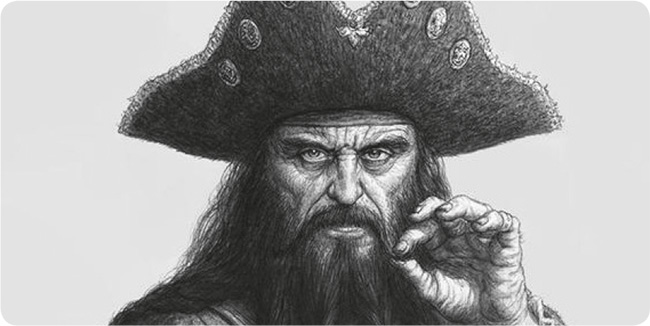For as long as there has been desire, there has been trade and for as long as there has been trade there has been currency. Whilst the latest currencies are most predominantly paper and coin based, historically there have been many different materials and concepts used as a means of exchange and barter. In this article we are going to look at some of the most remarkable, eclectic or peculiar currencies both past and present, starting with some of the more modern paper and coin currencies.
South African Rand
Most Notable Feature: Not a politician in sight
Most notes that you see in circulation today, are bold displays of public figures, political leaders and national buildings of the host nation. This however, is probably not a great idea if the country you represent is South Africa, given the social and political history in the region.
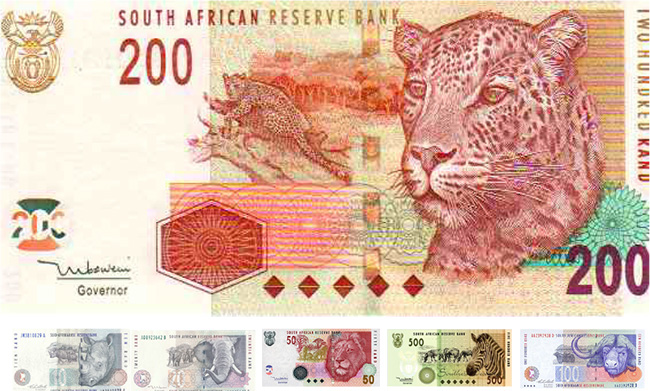
Many of the country´s historical leaders would certainly not be painted in a good light by the majority of the population, and most of the currency would probably end up as ash, valuable or not. When apartheid ended in South Africa, the currency was redesigned with this in mind and rather than displaying the traditional theme of person and place, the South African Rand proudly displays impressive images of the continent´s indigenous wildlife.
Aruban Florin Most
Notable Feature: Tribal meets modern
This tiny little Caribbean Island in the Lesser Antilles is home to a rather unique currency. The design incorporates a fusion of traditional tribal work and modern themes. The notes display motifs from pre-Colombian pottery as well as images of the country´s native wildlife.
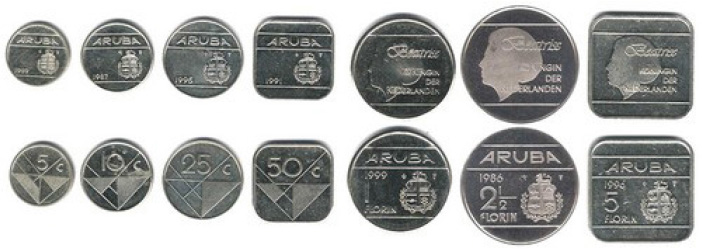
Aruba gained independence from the Netherlands in 1986 until which time the Netherlands Antillean Guilder had been the currency in circulation. As part of Aruba reconnecting with its own identity, came the creation of it’s own unique currency, the Florin. The initial set of notes released was updated with the notes we see below. These were designed by Local artist Evelino Fingal and released in 1990. Of the coins in circulation, most are round, but the 50 cent coin is of a square design. The 5 Florin coin was also of square design originally, but later replaced with a round coin.
Kazakhstani Tenge
Most Notable Feature: Sureal design. Sunglasses needed
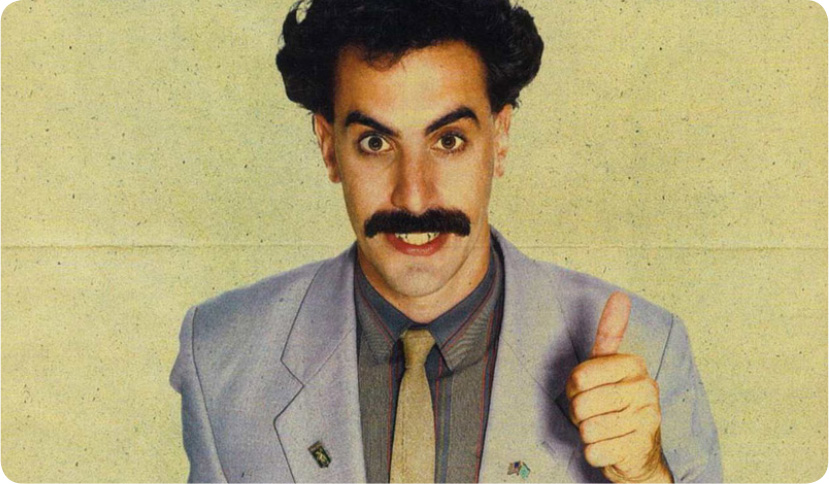
You would be forgiven for thinking that the antics of British comedian Sacha Baron Cohen in the guise of Borat were wild eccentric exaggerations of this landlocked former member of the CIS. In most respects this may be true. But when it comes to currency, the Kazakhstani Tenge is every bit as loud and untamed. The bank notes have that much going on that you may need a seat to even look at them, otherwise risk a dizzy turn or cosmic yawn. Since it’s first inception on 15th November 1993, the Kazakh Tenge has been through several design changes, all colourful and alive, but the latest collection issued in 2006 is by far the most ‘out there’.
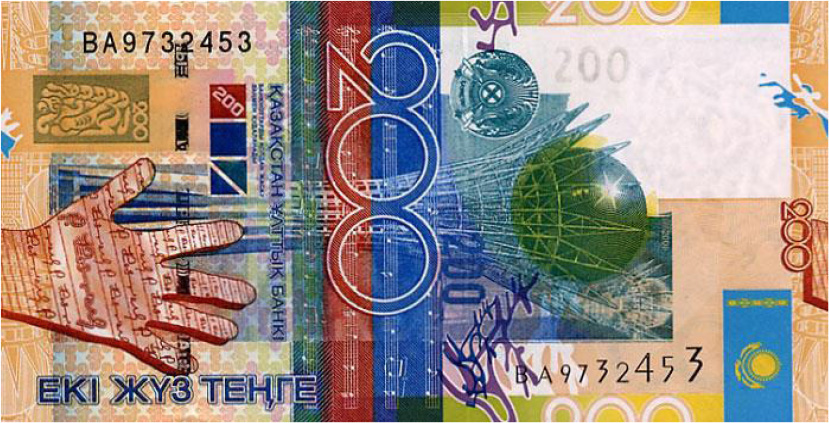
The back of the note is relatively simple and straight forward, mostly concerned with displaying an outline of the country. The front of the notes however, are quite simply noisy and bizarre. A rather unique design incorporates a cartoon like arm and hand reaching in from the left, with the notes of the Kazakh National Anthem spread over it. Beyond this there is a snow leopard, the Astana-Baitarek Monument, and a selection of strange graphical details or anomalies. A very strange combination of details to say the least.
Great British Pound
Most Notable Feature: Oh look! It’s a shield!
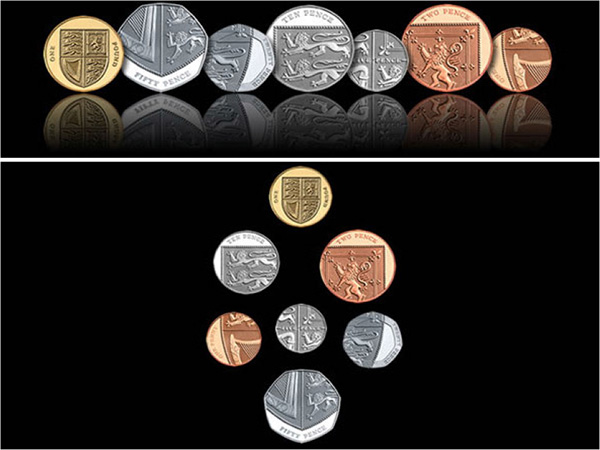
In a time when most European nations have done away with their own currencies in place of the Euro, the Great British currency remains strong in value and identity. The notes may appear run of the mill in design and appearance but the coins are quite remarkable. In 2008 the Royal Mint held an open competition to find a designer to revamp and reinvigorate their coinage, which had remained virtually unchallenged in design for nearly 40 years. Designer Matthew Dent came up with the winning concept shown below, in which the back of all the coins under £1 in value contain a fragment of the Royal Shield emblem. When arranged together as below, the coins combine to complete the shield. The back of the £1 coin displays a complete shield.
Antarctica Dollars Most
Notable Feature: Pink Floyd meets Disney, on a note.
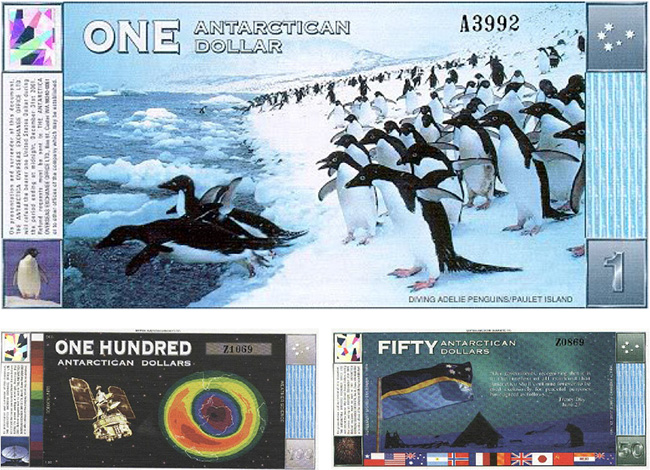
The Antarctican Dollar is not an official currency, and therefore not essentially legal tender. However, the issuing company, the Antarctican Overseas Exchange Office, will honour them for their face value and so I feel they are certainly worth entry. The design of these notes range from showcasing stunning landscapes to scientific pioneers.
The colour and design makes for one of the most aesthetically pleasing range of notes available. These notes are more collectors’ items than pocket money and pegged to the value of the USD. The extremely hostile environment isn´t renowned as a great tourist destination, but you should probably get some Antarctican dollars to spend if you do ever make a trip. Not somewhere you would want to get stuck without change for a warm drink, let’s be honest.
Zimbabwean Dollars
Most Notable Feature: Lots and lots and lots and lots of zeros.
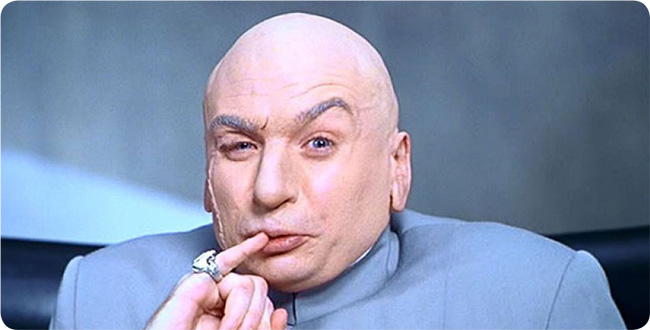
Zimbabwe, possibly the only example on Earth of a country where being a Trillionaire is virtually meaningless. This was certainly true in the years prior to the currency collapse in 2009 which caused teachers, doctors and civil servants to go on strike. There were images littering the press at the time of people rushing around with arms and baskets full of money. In most other currencies that would have been impressive!
Before the collapse, the largest bill to be minted was Z$100 trillion which sounds more like something you would expect as a Dr Evil line in an Austin Powers movie. This was a prime example of how escalating hyperinflation poorly addressed can ravage a currency.
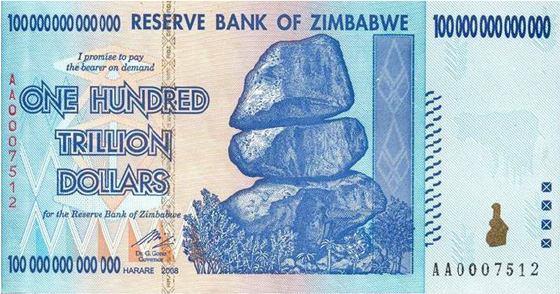
At the time of suspension, the ZWD had an exchange value against the GBP of 0.00182749. To put this into perspective, your average $4.50 Starbucks would cost $1,368.22 ZWD at a flat exchange. The money actually saw better days after the economic collapse, as collectors began bartering for the discontinued notes on auction sites such as EBay.
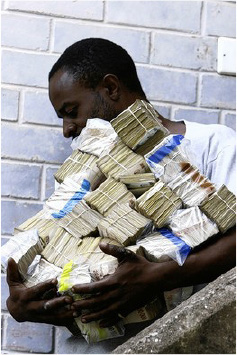
The value of these exchanges were very commonly far greater than the value of the currency itself. As ridiculous as it seems, if you want to own a one hundred billion dollar note, check out auctions for some Zimbabwean currency.
Plastic Cash
Most Notable Feature: Not good for lighting cigars with.
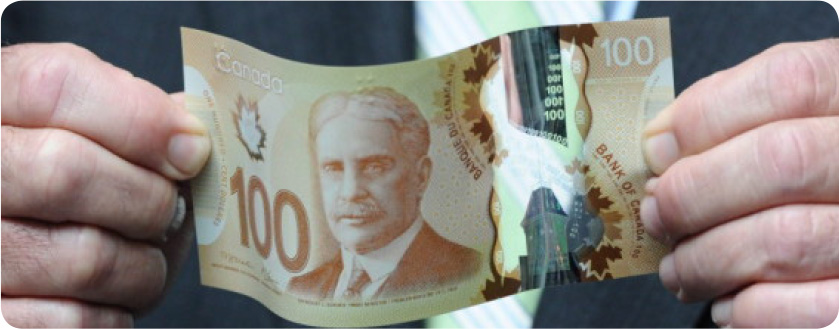
The future of paper currency could well exist in plastic technologies. The first plastic notes were designed as collaboration between Australian Scientist David Solomon and the Reserve Bank of Australia. Now both Canada and the UK are making plans to replace paper currency with the more resilient and economical plastic alternative.
Spanish Dollar - Pieces of Eight
Most Notable Feature: I think Long John Silver is stalking me!
Personally I always found the old Spanish Dollar, also known as the ‘Piece of Eight’ (peso de ocho) or the ‘Eight-Real Coin’ to have a very attractive appearance, mythology and history. The Dollar was dubbed the Piece of Eight due to its value being the equivalent of 8 Reales. It was first minted in 1497 to correspond with the German Thaler and it was indeed the first modern global currency.
The front of the coin is decorated with the coat of arms of the Habsburgs, the rulers of Spain and the most powerful family in Europe. It was used by many countries as international currency due to its uniform nature and it was even the coin on which the first US Dollar was based. Beyond the Spanish borders, there were several new-world mints that created the coins. Bounties of the coin reportedly litter the Caribbean Sea and the Atlantic, the result of many a pirate attack and naval skirmish as well as many a tall tale. As such, the ‘piece of eight’ is a thing of legend as common in mythology as it is in history.
Notgeld - German Emergency Money
Most Notable Feature: More valuable than a HMV voucher
Notgeld provides some of the most random examples of paper notes accepted for barter and exchange in history. The term ‘Notgeld’ is a rough German expression for emergency money or necessity money and refers to the issuing of currency from entities not legally authorised to do so. It can appear during periods of deflation or inflation, as a response to a central banks inability to produce enough funds, or their inability to provide stability in the value of a currency. It was first seen around the end of World War 1 due to inflation caused by the cost of war. At this time the value of the material that a coin was minted from was higher than the monetary value of the coin itself.
Notgeld was issued by cities, boroughs and private companies while the central bank struggled with a shortfall of official coins and bills. Often Notgeld was a more stable currency than real money and the denomination was sometimes given as a certain amount of gold, dollars, corn or meat. The notes were intentionally colourful and attractive, and became collectable even before they became invalid as a method of exchange.
The range in design and quality is vast, which would reflect more on the issuing institution than the value of the note. Some were very cartoon and science fiction orientated while others picturesque and scenic filled with detail and attention. While reflective of the desperation of the time, this series of notes are also reflective of the German and Austrian resilience and industrious work ethic. picturesque and scenic filled with detail and attention. While reflective of the desperation at the time, this series of notes are also reflective of the German and Austrian resilience and industrious work ethic.
Katanga Cross
Most Notable Feature: It’s a cross, looks like a ninja star and it’s cash!
The Katanga Cross or Handa, comes from a rich mining region of the same name in the southeastern portion of the DR of Congo. It is the traditional currency associated with the region and quite possibly the best known form of tribal currency in Africa. The X shaped ingots were cast from copper and for centuries served as an indication of wealth.
They were used for dowry payments and trade and in the early 20th century, a good trade might purchase five to six chickens, two lengths of good fabric, eight to nine pounds of rubber or six axes. Since they have been found in burial sites, they have also been associated with funeral rituals, and they were important items in the settling of social contracts such as marriages. They represent a very practical form of storing wealth in a volatile region, where they could be melted down and refashioned into a tool or a weapon if the need arose. One things for sure, through wealth or war, with some Katanga’s in your possession, people would respect your authority.
Chinese Flying Money
Most Notable Feature: I would tell you but it blew away.
This is the grandfather of paper currency as we know it today. The roots of paper money lay as far back as the Tang Dynasty (618-907 AD) where merchants desired to avoid the heavy burden of large coin transactions for a lighter more transportable exchange. The notes were nicknamed ‘flying money’ due to their lightness and tendency to blow away. Unfortunately no examples of flying money have survived this far. The oldest surviving example of paper money comes from the later Ming Dynasty (1368- 1644 AD). Europe did not adopt the practice of printing money until 1661.
Shell Me The Money
Most Notable Feature: If you put it to your ear you can hear your creditors asking for their money.
There is a strong argument that shell money may well have been the first real global currency. There is evidence of shell currency on almost every continent, with some examples from China and the Americas dating back to the end of the Neolithic age and in Africa as recently as the 19th Century. Shells were accepted as currency for barter and exchange widely due to their value as jewelry, and there is an on-going anthropological debate as to the distinction between shells turned into beads as money and as commodities. The most common shell used as currency was the Cowry, and different shells carried varying values in different cultures and tribes. Some Aboriginal tribes for instance may have given no value to the shell representing another tribe’s currency. Not much has changed there then in the global market!
Rai Stones Most
Notable Feature: Keep the change. It won’t fit in my pocket.
Possibly the most abstract currency in history, but a prime example of what exists at the core of any concept of money. Limestone may not seem like a valuable material to you and I, but to the people of the Island of Yap it was foreign, rare and therefore desired as a symbol of prestige and wealth. The Yapese quarried the limestone rocks from the islands of Palau starting around the time period of 1000–1400 AD.
There are some reports of smalls scale quarrying dating back much further but not of significant volume. The Rai Stones are circular disks with a hole in the middle which would allow for easier transportation of the material. The size of the stones varies widely and they are still used today in some social transactions including marriages and political deals. The stones do not need to move physical location to exchange ownership and historically, they would often remain in the same place as they did under prior ownership. All that would change is that everyone would accept and recognise that there was a new owner.
Kissi Money
Most Notable Feature: Careful, it can have your eye out!
Kissi Money known as the coin with a soul, was indigenous to West Africa, particularly the area that is now made up of Liberia, Sierra Leone, and Guinea. These iron bars were moulded with a twist and to various lengths between 9 to 15 inches, depending on the value. They had a T shape at one end and an almost spatula like formation at the other. The currency is still used for ceremonial affairs and sacrifices, but was replaced as a currency in the 20th Century.
Chilean Peso of 2008
Most Notable Feature: I can’t cee anthong wring wit this coine!
If you’re going to commission a brand new set of coins, make sure the designer has a basic grasp of your language. Tough lessons for the Chilean Mint back in 2008, where an estimated 1.5 million 50 peso coins were printed with Chiie rather than Chile on the front. With a face value of £0.06 each, that equates to a £90,000 mistake. It is no surprise that the person responsible was no longer welcome at the Mint the following day.
The $1million Canadian Dollar Coin
Most Notable Feature: Got change of a million mate?
Now this is just showing off. In 2007 the Royal Canadian Mint produced the world’s first million dollar coin. Weighing in at 100 kg, and composed of 99999 pure gold (99.99% pure) the bullion coin is officially the largest gold coin on record. While the face value of the coin is a cool $1 million, the actual value changes in line with the trade price of gold. It was originally conceived as a unique showpiece but the Mint decided to make an exclusive and very limited quantity available for sale after the interest of several parties. Five of these coins so far have been purchased by investors from Canada and abroad.
The 2007 Mongolian 500 Tugrik Coin
Most Notable Feature: What happens if I push this button?
This may probably be the most hilarious and random of the bunch. The Mongolian Mint is no stranger to creating collectible coins. They have a wide range of Tugrik coins pressed to commemorate all kinds of events from space flight to the Olympics, an array of animal prints and social and religious representations.
But how completely random it is to find a coin commemorating JFK, a political figure from a very distant land. However, the commemoration of JFK is not the strange thing. No, the strangeness begins when you press the little black button present on the coin, over the jacket of JFK. When you press the button a recording repeats a line from Kennedy’s famous “Ich bin ein Berliner” speech.
Unique if not quite unnecessary. While these coins were collectible items they were most likely aimed more at the German and USA market and it is unlikely that any of these coins remained in their native Mongolia or that any local was aware of the coin outside of the Mint staff.
The Europe Shaped Euro
Most Notable Feature: It’s a continent that fits in your pocket!
In 2002, the government of Nauru (Formerly known as Pleasant Island) decided to commemorate the introduction of the euro with its own specially commissioned Europe-shaped coin. To create a coin in the shape of a continent is certainly original if not bizarre. The coin was made of .999 fine silver and has a face value of 10 Australian dollars (the island’s normal currency).
Last but not least....
The New Zealand Dollar
As you can see, historically there have been some pretty strange and peculiar examples of currency envisaged and put into practice. However bizarre, there are a series of characteristics that remain true to every example, and these are desire, value, want, need and the underlying pursuit of power and wealth.

